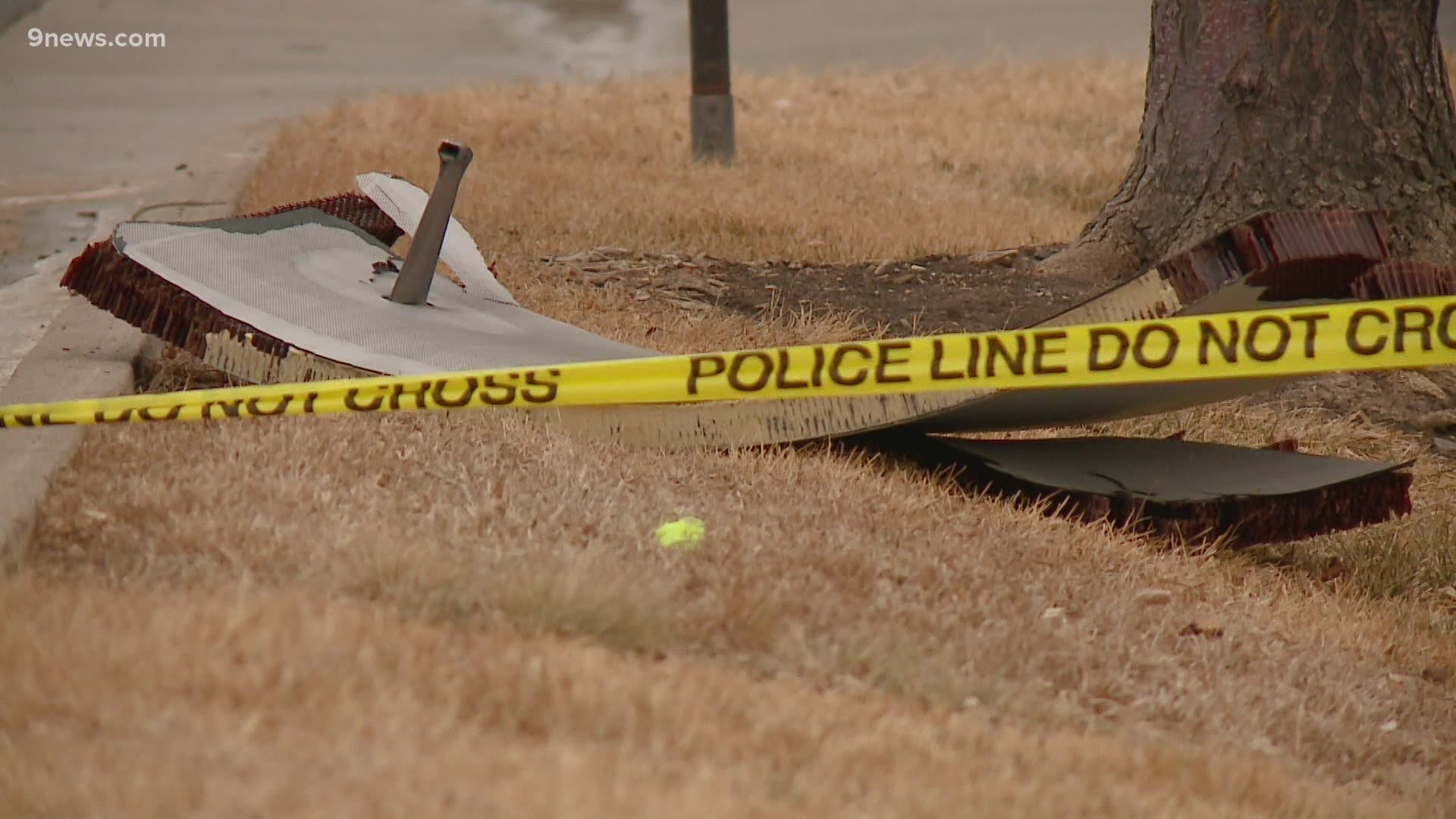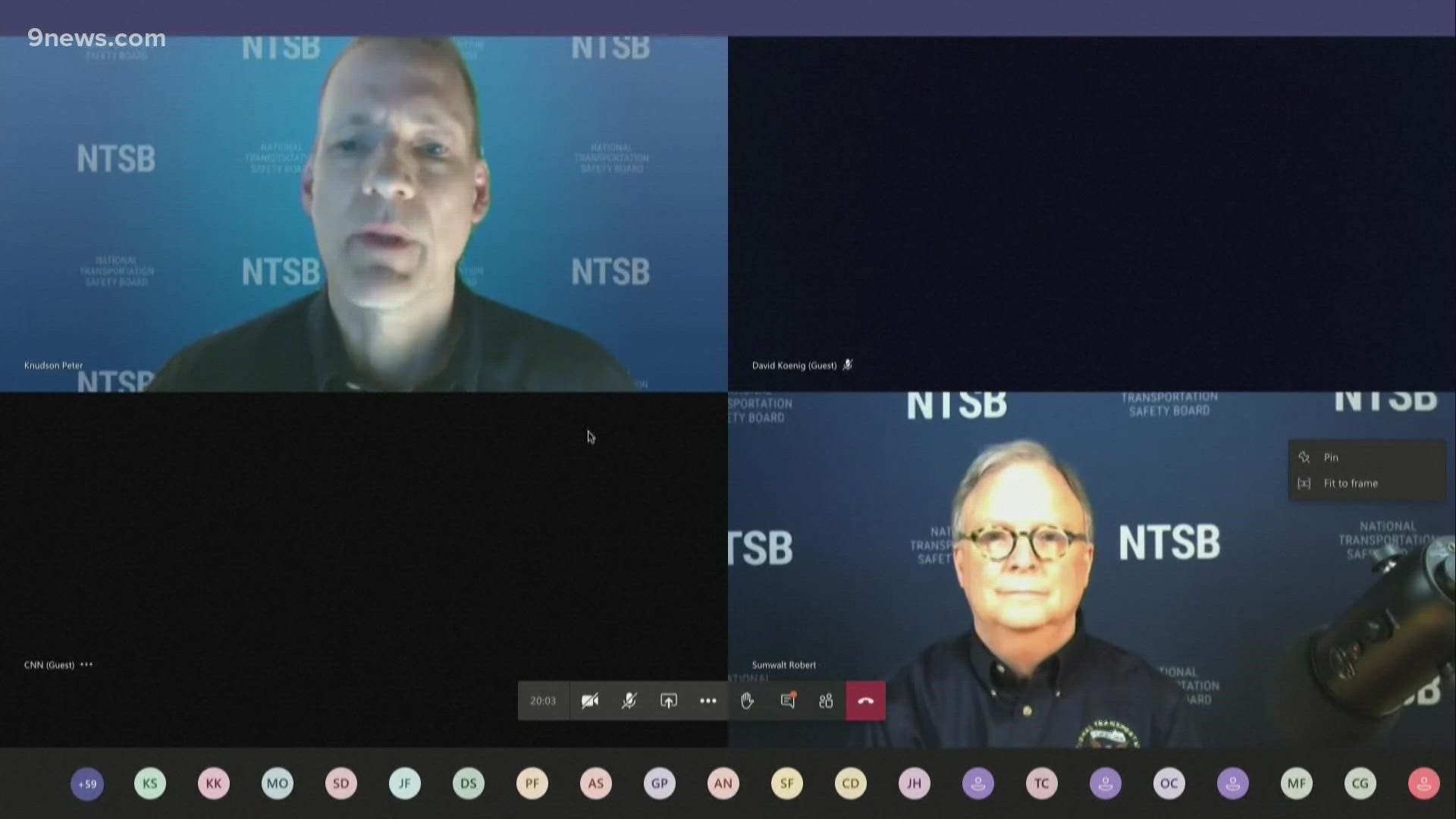DENVER — United Airlines in a statement Sunday evening said it is "voluntarily and temporarily" taking 24 Boeing 777 airplanes powered by Pratt & Whitney 4000 series engines out of service after an emergency landing Saturday at Denver International Airport (DIA).
According to the Federal Aviation Administration (FAA), the Boeing 777-200's right engine failed shortly after takeoff about 1 p.m. No injuries were reported, and the plane landed safely back at DIA.
"Since yesterday, we’ve been in touch with regulators at the National Transportation Safety Board (NTSB) and FAA and will continue to work closely with them to determine any additional steps that are needed to ensure these aircraft meet our rigorous safety standards and can return to service. As we swap out aircraft, we expect only a small number of customers to be inconvenienced," the statement from United reads.
Boeing followed suit and recommended suspending operations of all 777s with the specific engine type, the company said late Sunday.
Also on Sunday, the FAA in a tweet said Administrator Steve Dickson has directed an Emergency Airworthiness Directive that would require immediate or stepped-up inspections of Boeing 777 airplanes equipped with certain Pratt & Whitney PW4000 engines.
The statement says after Saturday's incident near Denver, officials said the inspection interval should be stepped up for hollow fan blades that are unique to this model of engine and used solely on the 777s.
United said it has 52 of the affected aircraft in its fleet – 24 active and 28 in storage.
NTSB investigation
The National Transportation Safety Board (NTSB) issued what it called an investigative update Sunday, and confirmed none of the 229 passengers or 10 crew members were injured on the flight.
The NTSB said most of the damage was confined to the No. 2 engine. However, the plane sustained minor damage.
The initial examination of the Pratt & Whitney PW4077 engine revealed:
- The inlet and cowling separated from the engine.
- Two fan blades were fractured.
- One fan blade was fractured near the root.
- An adjacent fan blade was fractured about mid-span.
- A portion of one blade was embedded in the containment ring.
- The remainder of the fan blades exhibited damage to the tips and leading edges.
The following initial investigative groups have been established, according to NTSB:
- Structures
- Powerplants
- Operations Factors
- Maintenance Records
- Flight Data Recorder
- Cockpit Voice Recorder
Analysis, conclusions and a determination of probable cause will come at a later date when the final report on the investigation is completed, NTSB said.
NTSB shared more details Monday, explaining that while preliminary investigations show there were no signs of structural damage to the plane, there were signs of metal fatigue as well as damage where the wing meets the body, NTSB Chairman Robert Sumwalt said.
Sumwall added there was an indication that fuel to the fire in the engine was turned off, a question investigators had after seeing videos of the engine on fire, so NTSB will be looking into what propagated the fire.
Boeing's history, statement
This isn't the first time Boeing has flown into trouble.
Boeing's 737 Max returned to U.S. skies in December after it was grounded following two deadly crashes.
The FAA approved changes that Boeing made to an automated flight-control system implicated in crashes in Indonesia and Ethiopia that killed 346 people in all. In both crashes, the system pushed the nose down repeatedly based on faulty sensor readings, and pilots were unable to regain control.
The FAA cleared the way for U.S. airlines to resume using the plane if certain changes are made and pilots are provided with additional training, including time in a flight simulator.
Boeing released a statement late Sunday saying while the NTSB investigation is ongoing, "we recommended suspending operations of the 69 in-service and 59 in-storage 777s powered by Pratt & Whitney 4000-112 engines until the FAA identifies the appropriate inspection protocol."
"Boeing supports the decision [Saturday] by the Japan Civil Aviation Bureau, and the FAA’s action [Sunday] to suspend operations of 777 aircraft powered by Pratt & Whitney 4000-112 engines. We are working with these regulators as they take actions while these planes are on the ground and further inspections are conducted by Pratt & Whitney," the statement reads.
Pratt & Whitney released the following statement on the incident:
"United Airlines Flight 328 is currently under NTSB investigation and Pratt & Whitney has dispatched a team to work with investigators. Pratt & Whitney is actively coordinating with operators and regulators to support the revised inspection interval of the Pratt & Whitney PW4000 engines that power Boeing 777 aircraft. Any further investigative updates regarding this event will be at the discretion of the NTSB. Pratt & Whitney will continue to work to ensure the safe operation of the fleet."
SUGGESTED VIDEOS: Local stories from 9NEWS


